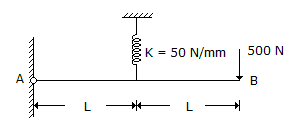Civil Engineering - UPSC Civil Service Exam Questions
Exercise : UPSC Civil Service Exam Questions - Section 8
- UPSC Civil Service Exam Questions - Section 14
- UPSC Civil Service Exam Questions - Section 27
- UPSC Civil Service Exam Questions - Section 26
- UPSC Civil Service Exam Questions - Section 25
- UPSC Civil Service Exam Questions - Section 24
- UPSC Civil Service Exam Questions - Section 23
- UPSC Civil Service Exam Questions - Section 22
- UPSC Civil Service Exam Questions - Section 21
- UPSC Civil Service Exam Questions - Section 20
- UPSC Civil Service Exam Questions - Section 19
- UPSC Civil Service Exam Questions - Section 18
- UPSC Civil Service Exam Questions - Section 17
- UPSC Civil Service Exam Questions - Section 16
- UPSC Civil Service Exam Questions - Section 15
- UPSC Civil Service Exam Questions - Section 1
- UPSC Civil Service Exam Questions - Section 13
- UPSC Civil Service Exam Questions - Section 12
- UPSC Civil Service Exam Questions - Section 11
- UPSC Civil Service Exam Questions - Section 10
- UPSC Civil Service Exam Questions - Section 9
- UPSC Civil Service Exam Questions - Section 8
- UPSC Civil Service Exam Questions - Section 7
- UPSC Civil Service Exam Questions - Section 6
- UPSC Civil Service Exam Questions - Section 5
- UPSC Civil Service Exam Questions - Section 4
- UPSC Civil Service Exam Questions - Section 3
- UPSC Civil Service Exam Questions - Section 2
11.
Which one of the following is not essential to derive the formula used in constructing a synthetic unit hydrograph ?
12.
In an aerial puhotogrammetric survey, if the exposure interval is 20 seconds to cover ground distance of 1000 m between exposures, what would be the ground speed of the aircraft ?
13.
The head over a 90° V-notch weir increases from 0.15 m to 0.3 m. The ratio of new discharge to the original discharge is, nearly equal to
14.
Consider the following statements with ragard to crack formation and its control:
1. The surface width of the crack should not, in general, exceed 0.30 mm for structures not subjected to aggressive environment.
2. When depth of web in a beam exceeds 750 mm, side face reinforcement @ 0.1 percent of web area should be provided on each face.
3. The nominal spacing of main bars in a slab should not exceed three times the effective depth of a solid slab or 300 mm, whichever is smaller.
Which of the statements given above is/are correct ?
1. The surface width of the crack should not, in general, exceed 0.30 mm for structures not subjected to aggressive environment.
2. When depth of web in a beam exceeds 750 mm, side face reinforcement @ 0.1 percent of web area should be provided on each face.
3. The nominal spacing of main bars in a slab should not exceed three times the effective depth of a solid slab or 300 mm, whichever is smaller.
Which of the statements given above is/are correct ?
15.
A rigid bar is supported by a spring as shown in the given figure.

The deflection of the point B will be

The deflection of the point B will be
Answer: Option
Explanation:
The Force in spring F = (500x2L)/L = 1000N.
Deflection in the spring δ = F/k = 1000/50 = 20mm.
Deflection at the point B = 2δ = 40mm downward.
Quick links
Quantitative Aptitude
Verbal (English)
Reasoning
Programming
Interview
Placement Papers